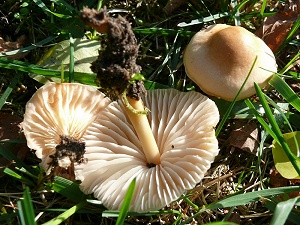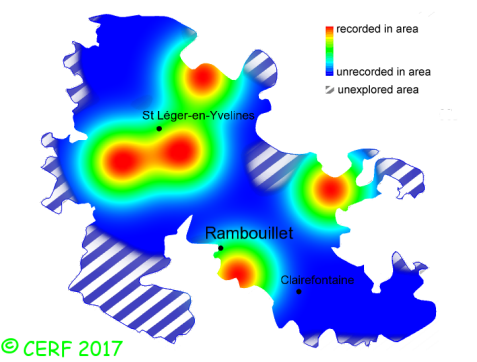| Marasmius oreades (Bolton:Fr.) Fr. |
|
|
|
|
|
|
The cap is buff to brownish red or reddish leather, with a central umbo; its margin is striate in damp weather, sometimes wavy. The cap surface is smooth, not viscid nor sticky. The stem is cream to leather-brown, without ring. The flesh is whitish, unchanging; its taste is mild; the odour is of bitter almonds, pleasant; its texture is fibrous. The gills are whitish cream to tawny pale, distant (nb of gills per 90° ~ 16 ). The spore print is white. This species is saprophytic. It grows on the ground, in meadows, parks, lawns, clearings, roadsides, often in fairy rings. The fruiting period takes place from April to December.
Chemical tests : none. Distinctive features : red-brown cap; flexible and very tough stem; pale and distant gills; in parks, lawns or pastures, in fairy rings Marasmius oreades is quite rare and localised in the forest of Rambouillet, and is very frequent, more generally speaking . | ||
|
page updated on 14/01/18

